This weekend, Leslie Klingner (furniture expert and curator of interpretation at the Biltmore Estate), led two tours of the Thomas Wolfe Memorial’s antiques. The event was part of the NC Department of Cultural Resources’ Second Saturdays programming.
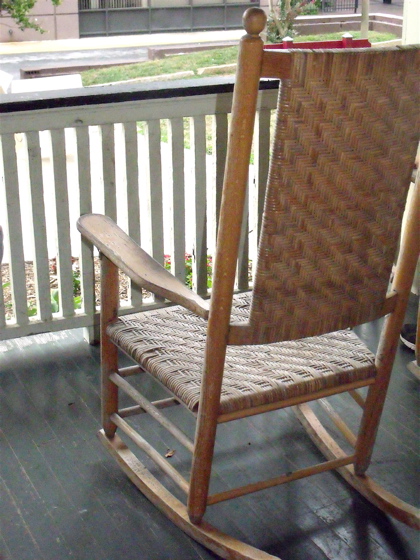
Beginning on the rocking chair-lined porch of The Old Kentucky Home — the boarding house run Thomas Wolfe’s mother Julia, and featured in Look Homeward Angel — Klingner explained that the house, built in 1883, was originally a single-family residence. Constructed at the end of the Victorian “gingerbread era,” the house is “an amalgamation of styles from the period.” Julia bought the house in 1906; it had been used as a boarding house by its previous owner.
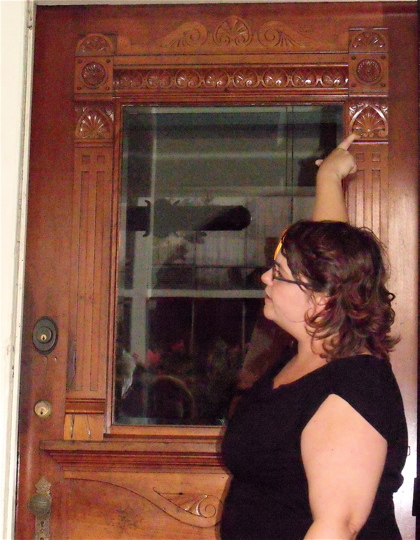
Above, Klingner talks about the finely-carved front door and points out a palmette motif which, she says, “Harkens to the idea of democracy. The furniture inside the Old Kentucky Home, says Klinger, is “a treasure trove” of styles and periods from 1870 to the 19-teens.

According to Klingner, a home’s front hall tells you how the family uses space and what they’re proud of. Since the Old Kentucky Home was a boarding house, its front hall held few personal items. It does include two marble-top tables, however. “Marble mania,” says Klingner, implied wealth because marble was rare. Also, Julia’s husband and Thomas’ father, W.O. Wolfe, was a marble carver.
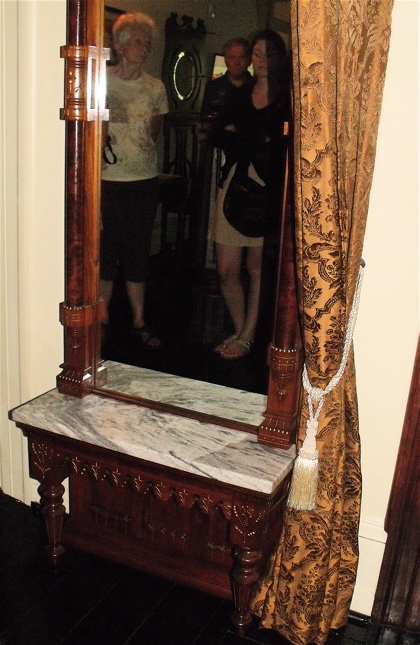
Marble is also displayed on the hall tree, which also features a sizable hall mirror. Klingner says hall mirrors made a statement because glass was expensive at the time. “It’s interesting that Julia Wolfe, who was known as a bit of a penny pincher, would have an elaborate hall mirror,” says Klingner. The hall tree was partially damaged in the 1998 fire that ravaged the historic property. From the marble slab down is original, the rest of the piece of furniture is a painstaking reconstruction.
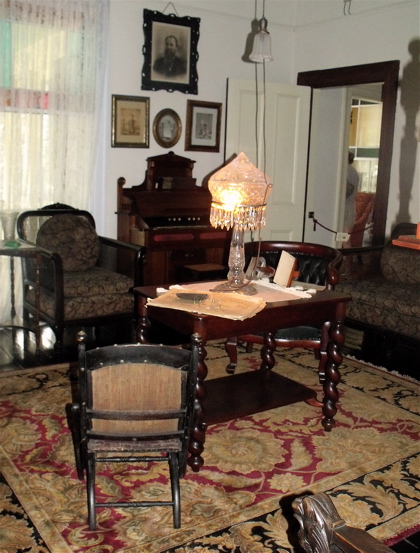
While the front hall is devoid of personal items, the parlor is a surprisingly intimate room with a wealth of family photos. Klingner explains that the odd-by-today’s-standards furniture arrangement — a table with a lamp in the center of the room — served a purpose. The central lamp was the room’s single light source, and the table became the focus for activities. The parlor also includes both a piano and an organ, which Klingner points out have very different tones and associations. Organs “relate to more of a Gothic feel.” Opposite the organ, the Wolfes had a Murphy bed, a bed that folds out of a cabinet. “The 19th century had a history of ‘metamorphosing’ furniture,’” Klingner explains. The Murphy bed was a forerunner to today’s sofa bed.
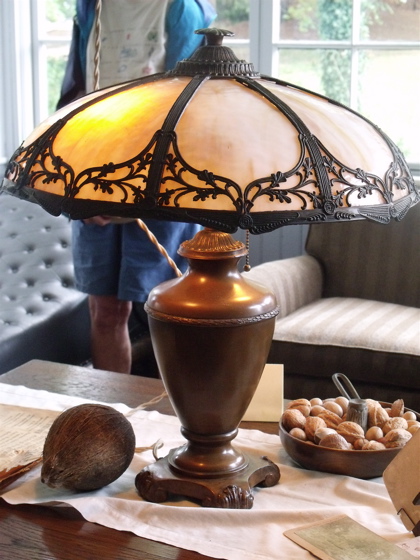
The sun room of the Old Kentucky Home holds more beds because, at the time, sun rooms and sleeping porches were favored for their proximity to fresh air. The sun room contains a variety of furniture styles because, when Julia purchased the home, it came with some furniture from the previous boarding house owner. One piece, lamp with a glass and metal shade, inspires many visitors to wonder if it’s a genuine Tiffany antique. Klingner explains that an authentic Tiffany lamp would have each piece of glass individually cut and fit into the metal work; the lamp at the Wolfe house is a Tiffany style (or “Tif-phoney”) antique. However, she adds, many people don’t realize that, at the time, Tiffany was producing lamps at a wide range of price points. A family like the Wolfes could have owned a genuine Tiffany. (To learn more about Tiffany work, the Biltmore Estate is exhibiting 45 stained glass lamps designed by Louis Comfort Tiffany. The display is free with a Biltmore ticket and runs through Oct. 23.)
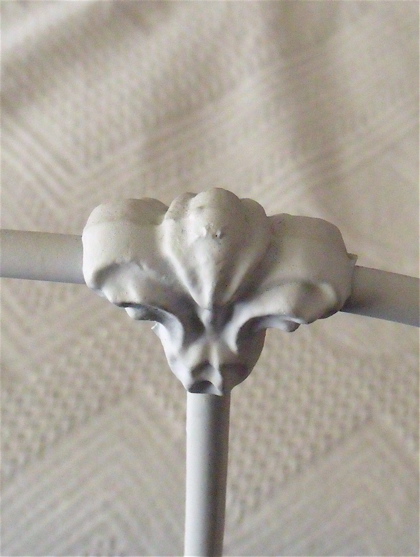
A large bedroom with two iron beds reveals a couple of things about the people of the early 20th century. First, says Klingner, they had “a very different notion of privacy.” For a not-exactly-budget rooming fee at the Old Kentucky Home, boarders would often find themselves sharing rooms and bathrooms with strangers. Metal beds were considered more hygienic than wood because metal lessened the chance of bed bugs and other disease-spreading agents.

Bedrooms in the Wolfe house reveal a number of “quirky dressers,” as Klingner says, like this combo dresser/dressing table/cheval mirror. The top compartment, which looks like a nightstand set atop the dresser, is often called a hatbox. Washstands (seen reflected in the mirror) often have door behind which a chamber pot may have been stored. While many houses of the day had indoor plumbing, full bathrooms were not as common and chamber pots were still widely used until World War II.
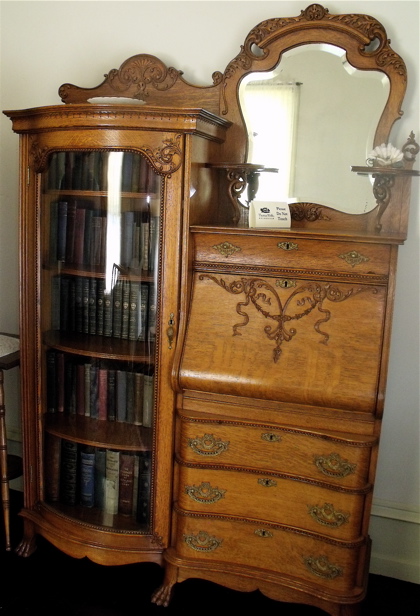
This bookcase belonged to W.O. and houses his personal books as well as books of the Wolfe family. W.O. spent his final days infirm in the large bedroom at the back of the Old Kentucky Home. The bookcase, which Klingner dates to 1905, was probably purchased through a Sears or Montgomery Ward catalog and was available at a range of price points. With its curved glass and carved wood, this would have been a more expensive version.
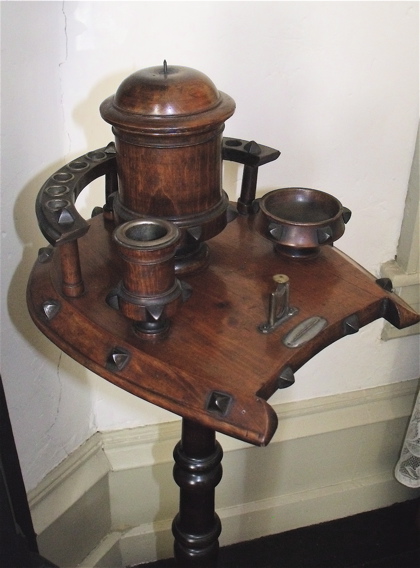
Two other objects that belonged to marble carver W.O. Wolfe include this smoking stand (above)
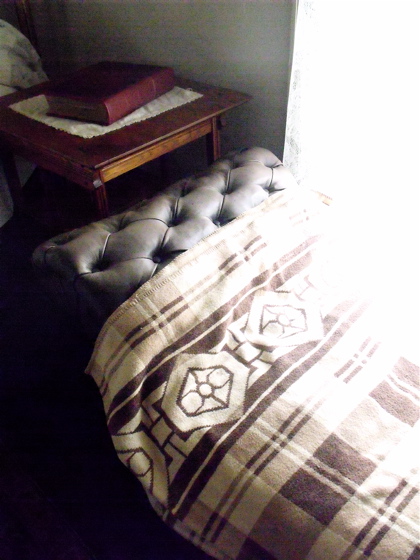
and this tufted leather chaise lounge. The chaise, or “Roman couch,” as Klingner calls it, is also a piece of “transforming” furniture. Its ends fold up or down for sitting or lying supine. Klingner says that leather, at that time, was considered durable but not luxurious. This piece of furniture was also restored following the fire.
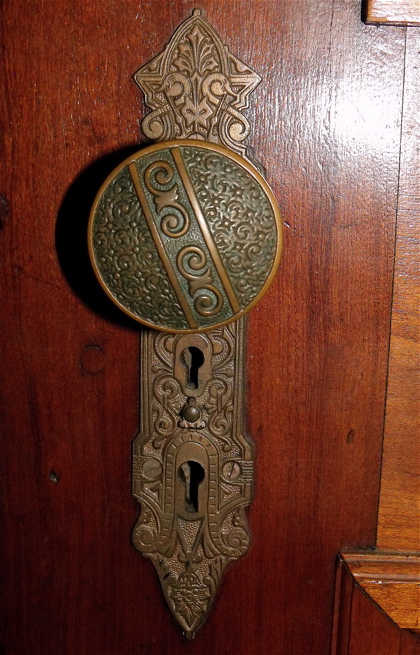
To learn more about the Thomas Wolfe Memorial go here. The house and visitor’s center are open Tuesday-Saturday from 9 a.m. to 5 p.m. and on Sunday from 1-5 p.m. House tours are offered daily at the bottom of each hour and cost $1.



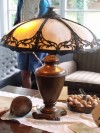
Before you comment
The comments section is here to provide a platform for civil dialogue on the issues we face together as a local community. Xpress is committed to offering this platform for all voices, but when the tone of the discussion gets nasty or strays off topic, we believe many people choose not to participate. Xpress editors are determined to moderate comments to ensure a constructive interchange is maintained. All comments judged not to be in keeping with the spirit of civil discourse will be removed and repeat violators will be banned. See here for our terms of service. Thank you for being part of this effort to promote respectful discussion.